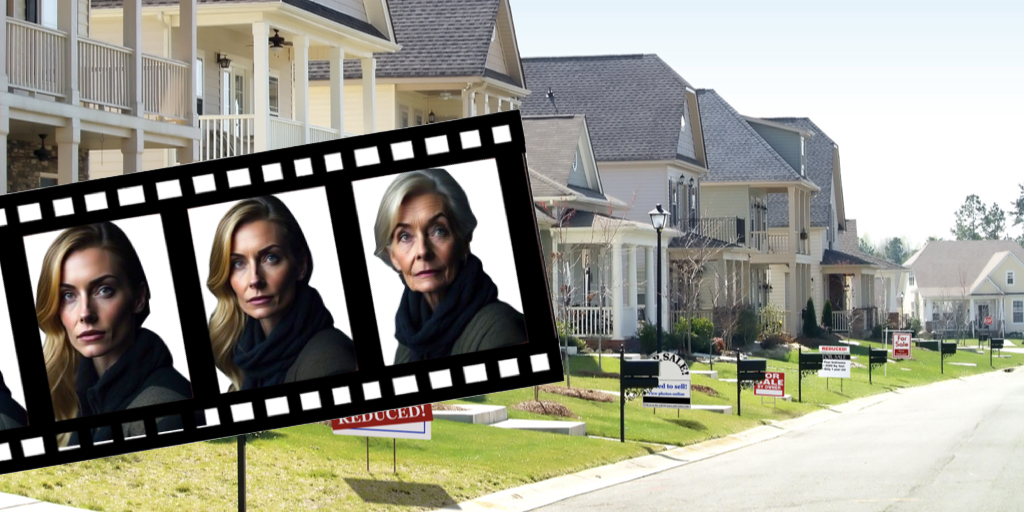Real estate columnist highlights the need to watch for ‘fake news’
 Any mortgage or financial product requires good faith on the part of the company and its representative when working with a potential client. Full disclosure and honesty are non-negotiable when working with homeowners. In addition, every reverse mortgage professional should be fully-informed of the common objections and misconceptions about the HECM.
Any mortgage or financial product requires good faith on the part of the company and its representative when working with a potential client. Full disclosure and honesty are non-negotiable when working with homeowners. In addition, every reverse mortgage professional should be fully-informed of the common objections and misconceptions about the HECM.
Maureen Hughes is a real estate professional with Keller Williams in West Chester, Pennsylvania. Her recent column entitled “4 reasons to reconsider a reverse mortgage’ warrants further examination. Are the four concerns or risks she outlines fair and accurate? As Hughes states “…there are some serious issues to be aware of and discuss before you jump on the reverse mortgage bandwagon.”
Troublesome Terms & Interest Rates
Reverse mortgages continue to be maligned as ‘high interest rate’ loans. Such inaccurate statements only serve to strike fear in the hearts of older homeowners and unfairly associate HECMs with predatory lending. Nothing could be further from the truth. Hughes states, “Reverse mortgage interest rates and loan fees in general tend to be higher than standard home loans. Often, reverse mortgages are not able to be renegotiated, so being sure this type of mortgage is the absolute best choice for you and your family.” To be fair, reverse mortgage interest rates could be marginally …










2 Comments
Shannon great comments on this article and I do hope someone from NRMLA or your company sends these critiques our industries accurate critiques.
One of the most problematic issues related to HECMs is their actual costs. We can talk about who is the ultimate payer and the issue of parent versus heir but they are more deflection than fundamental responses. So let us look at costs.
Do seniors really understand the trade off they are making when they refinance their existing forward mortgages into a reverse mortgage? Say a senior has ten years of monthly payments of interest and principal of $2,112.51 remaining on a 30 year fully amortized mortgage with a balance due of $200,000. If the senior would continue paying off the mortgage, total interest paid over that 10 year period would be $53,501.
Let us say the senior refis the mortgage into a new 30 year mortgage fully amortized conventional mortgage with a 5% fixed rate and no upfront costs. His new monthly payments are $1,069.19 per month of just principal and interest. After 30 years, $184,908 of interest would be incurred and paid. So the senior needs to answer the question, is lowering the monthly payment by $1,043 but extending the payment by 20 years resulting in $131,407 more interest, really worth the increased cost?
Now looking at a HECM with an effective interest rate of 5% and no upfront costs would end up with accrued interest of $878,266 and accrued MIP of $219,567 for a total of $1,097,833 accrued costs in 30 years. So the question becomes is having no monthly payments of interest or principal for 30 years worth the $1.1 million in accrued costs? And what happens if the borrower lives 5 years longer so that the HECM ends up with $474,657 in even more accrued costs?
Of course the senior could always downsize using a HECM if total living costs after making this move are substantially less but even then, making monthly payments will generally result in much lower financing costs. So how about setting up a thirty year accrued cost only payment plan using a HECM?
Using the case above that $200,000 will be financed, the cost each month will be $1,041.67. That is almost the same as financing the downsize using a 30 year fully amortized conventional mortgage that will be paid down as the payments are made and completely paid off in 30 years.
Although the payment structure of paying off accrued costs sounds great, it is generally futile since the payer will owe the same principal over the life of the HECM. To fully amortize the HECM over 30 years would require monthly payments of $1,225.05 in principal and interest. That is about $180 per month more than the conventional mortgage for the same 30 year period. Yet where this could make some sense is where the senior has had problems being late on payments. Late payments can not only result in late fees but can also harm credit in other areas. So in this respect a HECM even though costlier could be a better solution.
Learn to look at a HECM in the way of a fiduciary and be creative. HECMs are not always the best solution but even in those circumstances they can provide the most pragmatic solution.